Cities: Skylines PC beginner's guide — How to control pollution and maintain a happy population
Cities: Skylines is a super-popular city management simulator for PC that's coming to the Xbox One and Windows 10. It's simple to pick up but difficult to master. Here are a few things you should know before getting started.
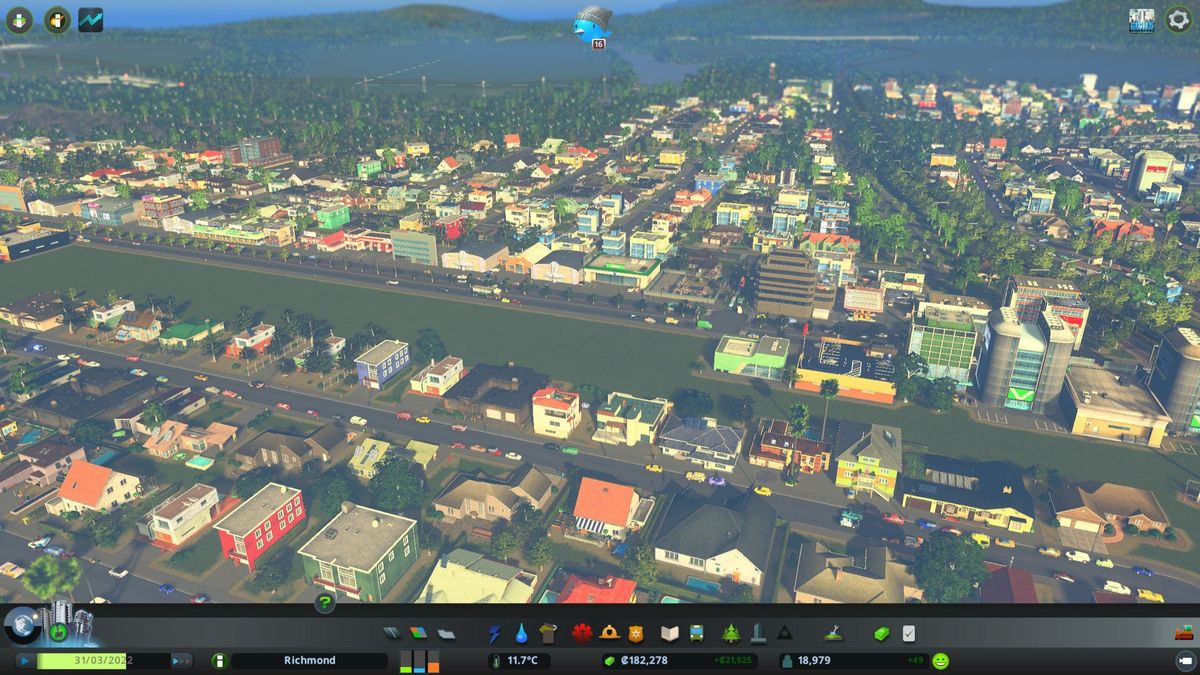
What is Cities: Skylines?
The game, developed by Colossal Order and published by Paradox Interactive, has been well-received on PC since it launched in 2015. It's a city management simulator, similar to SimCity. In fact, many believe this to be the game that should have come out from EA instead of what it actually released. The player is put in charge of building up a city of thousands of people from nothing.
You're tasked with managing finances, planning new developments, building and maintaining transport, and much more. Remarkably, while the game itself is deep and is rather difficult to master, it is incredibly easy to pick up and enjoy a play-through or two. The game does a good job of walking you through the basics, but it's entirely down to you how you go about things.
Today, you can purchase Cities: Skylines on Steam, but we'll update this guide with store links for both Xbox One and Windows 10 once the game goes live there.
The seeds of life
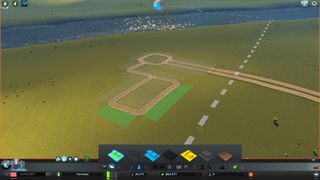
We'll be playing a vanilla start with all milestone restrictions in place. I prefer to play this way, even with access to mods, simply because I enjoy the progression that Colossal implemented with the tutorial-like leveling system. At various population milestones, you unlock new buildings, services and more. Your first steps in starting a new game will always be to place a single piece of road, which should be from the main junction to where you wish to start building the city.
There are a number of road types available, each with a speed restriction and density support. Once you have your road placed, you'll need to create a residential zone.
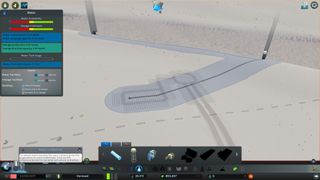
Next, you'll need to draw some water from a body of water and generate power. The former is achieved with a pump and pipes and the latter with a power station or wind turbines. Pipes simply need to cover your residential zone and connect up to the water pump. For power, you'll need to hook your chosen power source to houses and other property by using pylons.
Get the Windows Central Newsletter
All the latest news, reviews, and guides for Windows and Xbox diehards.
Waste not, want not
As well as drawing water, you're going to need to dump feces generated by people who move in somewhere down the stream. You can connect this outlet to the main water pipe system. (Pro tip: Do not have your water pump located downstream from the sewage outlet.) Here's what you set up thus far, including a simple road connection with the foundations of our first district:
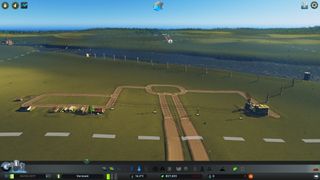
Don't freak out if you're losing around $1,000 each tick, as this will change to profit once people move in and you start allowing commercial and industrial buildings to build to export products. You can also quickly reduce budget allocated to newly-installed power generation and water services until demand for those services increase. Just remember to put the sliders back to normal!
Balancing demand
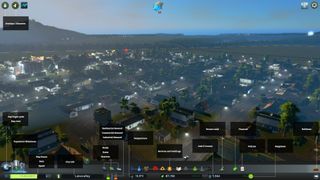
The image above shows some of the controls you'll have to play with on Windows 10 and PC versions of the game. Xbox One owners will likely have a controller-friendly UI, but we bet most of the available functionality will remain available. You see those three bars in the bottom of the interface colored green, blue, and orange? These represent the current demand for residential, commercial, and industrial zones.
When starting a new game, you only have residential demand because no one lives in your city. Once you have a good number of homes established, demand for jobs will increase that can be addressed by zoning new commercial and industrial districts. It's worth noting some things when it comes to planning out your city:
- Commercial zones create noise pollution that can have negative effects on nearby homes, but residents enjoy quick access to shops.
- Industries should be located some distance from residential streets to avoid covering homes with pollution.
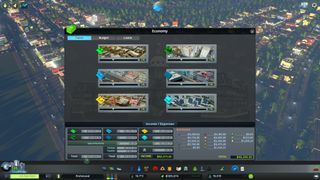
In the zones
But wait, just what are these zones?
- Residential - Where your "Cims," or residents, live.
- Commercial - Shops, companies and enterprises work with nearby factories to sell goods to residents. If they cannot sell enough goods or workers the properties will eventually close down.
- Industrial - These are your factories, utilizing raw or renewable materials to make goods. They provide jobs and require commercial zones to buy their products. If they can't locate a suitable store to partner with, the industry will attempt to export goods beyond your city.
The aim is to maintain a healthy balance between the three types of zones, but it never really feels like a chore. It's enjoyable to plan a new neighborhood and watch people move in.
Watch for pollution
Pollution is a deadly force in this game, and it can affect your population and make them either unhappy or sick. An overlay can be enabled to view pollution created by industry and waste services, as well as noise generated by busy commercial districts. You need to plan around these areas accordingly and watch for wind directions to better combat the flow of pollution.
Industries start off creating a fair amount of the brown polluted stuff, but once they upgrade to level two and eventually level three, they produce less gunk thanks to modern advancements. Industries tapping into renewable resources will not add to your issue but will drain more power and water. General factories and fossil fuel industries will most certainly produce pollution. Highlighting the type of industry you will zone can provide a reminder of what they require and produce.
Everyone has a life
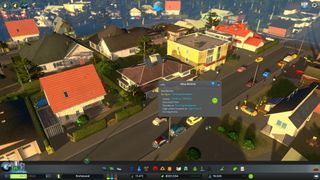
What makes Cities: Skylines an interesting game is how deep the simulation goes. Each Cim has a home, a job, and a schedule to keep. Kids go to school while workers make the trip to work in their own vehicles. They also have needs and desires. Some will go out to do some shopping after work, while others will head to local parks and recreational points of interest. You can even follow Cims as they go about their daily business.
This alone signifies some of the problems you'll encounter with regards to traffic. The more houses you have means more cars will be on the road unless you have a sound transport system. The same goes for commercial vehicles. Lots of industry and shops in your city will result in increased amounts of trucks, but this can be solved with a well-positioned freight depot for rail and shipping. With this high level of simulation, it's possible to create a balanced transport network or change a single stretch of road and cause insane levels of traffic.
Keep your Cims happy
As you unlock each milestone, the game will present you with new services and buildings. It's strongly recommended you build these as soon as available, especially emergency services. Cims like their city council to provide an adequate level of services. They like to be able to head to a nearby park, utilize public transport, and have no issues with full medical centers. They don't want to reside in an area of high crime. Keeping Cims happy is actually rather easy, and some players may even consider it to be too easy.
So long as you pay attention to needs and keep on top of finances, services and production, everyone will enjoy living in your city. The higher the education available (high school or university), the more educated your workforce becomes. And they will require more prestigious positions, which in turn will task you with upgrading commercial and industrial areas. This can be achieved by ensuring public transport passes through these zones, they are covered by emergency services, and the surrounding area is well maintained.
Start small, think big
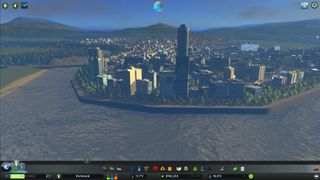
You start off with a single piece of land, but it is possible to purchase adjacent squares for a total of nine to be unlocked. Considering a small city can be contained within a single square, this opens up massive amounts of space for construction and more creative landscaping. Colossal Order implemented some brilliant tools for manipulating terrain, and it's worth taking advantage of elevation support through the use of bridges, as well as burrowing below in tunnels.
As you continue to develop and expand your city, you'll eventually unlock high-density residential and commercial zoning, as well as offices. This is where you can create a downtown district with high-rise buildings, but these will create much more traffic than smaller homes and businesses, so you'll need to do some infrastructure improvements and consider adding more public transport — buses, trams, trains, and the metro are your friends.
Your first city will suck, and that's OK. With each start and more experimenting under your belt, you'll begin to get into the swing of things and understand better how the game reacts to various decisions you make. On city No. 872, I'm still learning new things about Cities: Skylines. But I feel as though I have enough experience to create some fantastic-looking (and functionally sound) places to live.
Cities: Skylines tips and tricks
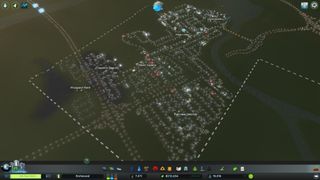
- Don't go overboard in the beginning, especially with roads, because your budget will quickly be destroyed.
- Roundabouts, when placed as actual circles, allow for a more free flow of traffic.
- For a fee, you are able to relocate public services buildings.
- While it's possible to throw your budgets up to 150 percent, it's generally more efficient to place another services building.
- Don't be afraid to destroy roads and try new ways of managing traffic, to adapt your city to current demands.
- Ground and air pollution don't spread far, but it's still worth keeping an eye on.
- Restarting from scratch isn't a sign of defeat, but is in instead a desire to try something new.
- One-way roads can be incredibly effective, but make a note of how emergency services can quickly reach all buildings.
- The fewer intersections you have with your roads (especially the main ones), the better for traffic management.
- A dam is a great source of electricity for the city, but watch out for potential flooding as it creates a body of water behind it.
- Save up cash and move from landfill sites to incinerators to avoid a massive backlog of trash.
- Utilize different types of road. Larger roads can take more traffic, but you shouldn' place highways everywhere.

Rich Edmonds was formerly a Senior Editor of PC hardware at Windows Central, covering everything related to PC components and NAS. He's been involved in technology for more than a decade and knows a thing or two about the magic inside a PC chassis. You can follow him on Twitter at @RichEdmonds.